#Pinatex
Explore tagged Tumblr posts
Text
Bio Based Leather Market Size, Share, Trends, Opportunities, Key Drivers and Growth Prospectus
"Bio Based Leather Market – Industry Trends and Forecast to 2029
Global Bio Based Leather Market, By Source (Mushroom, Pineapple, Cork, Leftover Fruits, Others), Application (Footwear, Furnishing, Automotive, Clothing, Bags and Wallets, Sports, Electronics, Others), By Sales Channel (Online, Offline) – Industry Trends and Forecast to 2029
Access Full 350 Pages PDF Report @
**Segments**
- **Material Type**: The bio-based leather market can be segmented based on the material type, including mushroom leather, pineapple leather, apple leather, and others. Mushroom leather, also known as mycelium leather, is a sustainable alternative to animal leather made from mycelium cells. Pineapple leather, also called Pinatex, is made from the fibers of pineapple leaves, offering a cruelty-free and eco-friendly option. Apple leather is a byproduct of apple juice production, utilizing the discarded skin and cores to create a leather-like material. These material types cater to the increasing demand for sustainable alternatives in the fashion and automotive industries.
- **End-Use Industry**: Another crucial segmentation of the bio-based leather market is based on end-use industries, which include fashion, automotive, furniture, and others. In the fashion industry, bio-based leather is gaining popularity among environmentally conscious consumers and ethical fashion brands looking for sustainable materials. The automotive sector is also adopting bio-based leather for interior applications, reducing the carbon footprint of vehicles. Similarly, the furniture industry is incorporating bio-based leather for upholstery and interior décor, driving the demand for eco-friendly materials in the market.
**Market Players**
- **Bolt Threads**: Bolt Threads is a major player in the bio-based leather market, known for its innovative mycelium-based leather called Mylo. The company has partnered with renowned fashion brands to introduce sustainable leather products to the market, catering to the growing demand for eco-friendly alternatives in the fashion industry.
- **Ananas Anam**: Ananas Anam is a leading provider of pineapple leather, marketed under the brand name Pinatex. The company has collaborated with various fashion and accessory brands to offer cruelty-free and sustainable leather alternatives, contributing to the circular economy and responsible sourcing practices in the fashion industry.
- **Frumat**: Frumat is a key player in the apple leather segment, specializing in transforming apple waste into leather-like material for various applications. The company's eco-friendlyFrumat has made significant strides in the bio-based leather market by utilizing apple waste to create a sustainable alternative to traditional leather. The process of transforming apple byproducts into leather-like material not only reduces waste but also offers a cruelty-free option for consumers looking for eco-friendly choices in the fashion and accessories industry. Frumat's innovative approach to repurposing fruit waste showcases the potential for circular economy practices in the fashion sector, highlighting the importance of sustainability and responsible sourcing.
As consumer awareness and demand for sustainable products continue to rise, companies like Frumat play a pivotal role in driving the adoption of bio-based leather materials in various industries. The unique selling proposition of apple leather, with its environmentally friendly production process and resourceful use of agricultural waste, positions Frumat as a key player in the market. By providing a renewable and biodegradable alternative to traditional leather, Frumat contributes to the shift towards more sustainable practices in the fashion and accessories market.
Furthermore, the collaboration of Frumat with fashion brands and manufacturers to incorporate apple leather into their product lines showcases the versatility and adaptability of this bio-based material. As the push for more sustainable and ethical fashion choices gains momentum globally, Frumat's apple leather presents a compelling option for companies seeking to align with consumers' preferences for eco-conscious products. The expansion of apple leather into new applications and industries demonstrates the market potential and growth opportunities for bio-based materials in the broader context of sustainability and responsible consumption.
In addition to addressing environmental concerns, the production of apple leather by Frumat also offers economic benefits by utilizing agricultural byproducts that would otherwise go to waste. This circular approach to materials sourcing contributes to a more efficient and resourceful supply chain, while also creating opportunities for innovation and value creation in the bio-based leather market. As Frumat continues to refine its processes and expand its product offerings, the company is well-positioned to capture a larger share of the growing demand for sustainable alternatives in the global fashion and accessories industry.
Overall, Frumat's focus**Market Analysis**
In the evolving landscape of sustainable materials, bio-based leather has gained significant traction as a preferred alternative to traditional leather, driven by environmental concerns and ethical considerations. With a focus on eco-friendliness and cruelty-free production, bio-based leather made from sources like mushrooms, pineapples, and apples has emerged as a viable solution for industries seeking to reduce their carbon footprint and embrace sustainable practices. The market players, including Frumat, have played a crucial role in advancing the adoption of bio-based leather materials by leveraging innovative technologies to transform agricultural waste into high-quality, durable leather-like products.
**Segments** - **Material Type:** The bio-based leather market encompasses a diverse range of material types, catering to the increasing demand for sustainable alternatives in industries such as fashion and automotive. Mushroom leather, pineapple leather, and apple leather offer unique benefits in terms of sustainability and eco-friendliness, appealing to environmentally conscious consumers and brands looking for ethical sourcing practices. - **End-Use Industry:** Bio-based leather finds applications across various industries, including fashion, automotive, furniture, and more. Its versatility and durability make it a preferred choice for upholstery, clothing, accessories, and interior décor, driving the demand for eco-friendly materials in the market. As consumer preferences shift towards sustainable products, the adoption of bio-based leather in different sectors is expected to continue growing.
**Global Bio-Based Leather Market** - **Source:** Mushroom, Pineapple, Cork, Leftover Fruits, Others
The report provides insights on the following pointers:
Market Penetration: Comprehensive information on the product portfolios of the top players in the Bio Based Leather Market.
Product Development/Innovation: Detailed insights on the upcoming technologies, R&D activities, and product launches in the market.
Competitive Assessment: In-depth assessment of the market strategies, geographic and business segments of the leading players in the market.
Market Development: Comprehensive information about emerging markets. This report analyzes the market for various segments across geographies.
Market Diversification: Exhaustive information about new products, untapped geographies, recent developments, and investments in the Bio Based Leather Market.
Global Bio Based Leather Market survey report analyses the general market conditions such as product price, profit, capacity, production, supply, demand, and market growth rate which supports businesses on deciding upon several strategies. Furthermore, big sample sizes have been utilized for the data collection in this business report which suits the necessities of small, medium as well as large size of businesses. The report explains the moves of top market players and brands that range from developments, products launches, acquisitions, mergers, joint ventures, trending innovation and business policies.
The following are the regions covered in this report.
North America [U.S., Canada, Mexico]
Europe [Germany, UK, France, Italy, Rest of Europe]
Asia-Pacific [China, India, Japan, South Korea, Southeast Asia, Australia, Rest of Asia Pacific]
South America [Brazil, Argentina, Rest of Latin America]
The Middle East & Africa [GCC, North Africa, South Africa, Rest of the Middle East and Africa]
This study answers to the below key questions:
What are the key factors driving the Bio Based Leather Market?
What are the challenges to market growth?
Who are the key players in the Bio Based Leather Market?
What are the market opportunities and threats faced by the key players?
Browse Trending Reports:
Mhealth Solutions Market Telecom Cloud Billing Market Industrial Cooking Fire Protection Systems Market Food Manufacturing Market Natural Surfactant Market Industrial Networking Solutions Market Facility Management Market Cathode Materials Market High Purity Gases Market Cassava Starch Market Embedded Connectivity Solutions Market Central Fill Pharmacy Automation Market Rfid In Healthcare Market Virtual Pipeline Systems Market Fiberoptic Phototherapy Equipment Market Suture Passer Market Baby Apparel Market Peanut Allergy Treatment Market
About Data Bridge Market Research:
Data Bridge set forth itself as an unconventional and neoteric Market research and consulting firm with unparalleled level of resilience and integrated approaches. We are determined to unearth the best market opportunities and foster efficient information for your business to thrive in the market. Data Bridge endeavors to provide appropriate solutions to the complex business challenges and initiates an effortless decision-making process.
Contact Us:
Data Bridge Market Research
US: +1 614 591 3140
UK: +44 845 154 9652
APAC : +653 1251 975
Email: [email protected]"
#Bio Based Leather Market – Industry Trends and Forecast to 2029#Global Bio Based Leather Market#By Source (Mushroom#Pineapple#Cork#Leftover Fruits#Others)#Application (Footwear#Furnishing#Automotive#Clothing#Bags and Wallets#Sports#Electronics#By Sales Channel (Online#Offline) – Industry Trends and Forecast to 2029#Access Full 350 Pages PDF Report @#https://www.databridgemarketresearch.com/reports/global-bio-based-leather-market#**Segments**#- **Material Type**: The bio-based leather market can be segmented based on the material type#including mushroom leather#pineapple leather#apple leather#and others. Mushroom leather#also known as mycelium leather#is a sustainable alternative to animal leather made from mycelium cells. Pineapple leather#also called Pinatex#is made from the fibers of pineapple leaves#offering a cruelty-free and eco-friendly option. Apple leather is a byproduct of apple juice production#utilizing the discarded skin and cores to create a leather-like material. These material types cater to the increasing demand for sustainab
1 note
·
View note
Note
What is vegan leather?
Well everyone likes to pretend that plastic is the only thing a leather alternative possibly can be made from, but that’s only true if you desperately want it to be. Pleather is what people are generally talking about; but the idea that plastic jackets exist because of vegans is laughable.
Vegan leather is just any material that vaguely resembles leather in form or function but is not made from animal hide or byproducts. You can make it out of plastic sure, but also cork, recycled materials, leaves, pineapple fibres, mushrooms, pinatex - there are many options. There are seldom reasons you would even need to imitate leather outside of a working context anyway, so you also have just about every other textile in existence to choose from.
49 notes
·
View notes
Text
Eco Friendly Ethical Heels
Discover O2 Monde, the eco-friendly, ethical heels factory redefining luxury footwear. Using plant-based materials like Pinatex, we craft stylish, sustainable heels that are kind to the planet. Step into a future of conscious fashion with O2 Monde!
#woman shoes online#woman shoes#girls shoes#clothes#flat shoes#stiletto shoes#shoes#accessories#little goody two shoes
0 notes
Text
Synthetic Leather Market: Exploring Sustainable Prospects

The history of synthetic leather dates back to the mid-19th century when it was produced in response to a limited supply of natural leather. Pyroxylin-infused cotton fabric was among the earliest substitutes, largely used in bookbinding and upholstery. Since then, this sector has grown tremendously for the right reasons. With growing consumer consciousness about animal cruelty and technological advancements, materials like polyurethane (PU) and polyvinyl chloride (PVC) have gained traction to enhance the durability and versatility of faux leather, making it ideal for use in footwear, clothing, furniture, and automotive interiors. Our estimates signify that the global synthetic leather market will reap revenue worth $57.90 billion by 2030, growing at a CAGR of 7.48% during the forecast period 2023-2030.
For businesses, synthetic leather has opened various opportunities owing to its durability and water-resistant properties, required elements for products to withstand the test of time. For instance, BASF’s synthetic leather includes thermoplastic PU Elastollan offering wear resistance to car seats.
While the varied material composition is one aspect, the veganism trend has widened the overall scope of the synthetic leather market.
Rise of Faux Leather: Vegan Uprising Intersects Durable Design
Vegan fashion has emerged as a prominent topic, in addition to sustainability and digitalization, in the textile and fashion industry. According to PETA, cow leather harms the environment almost 6 times more than plant-based fabric. And thus, the growing awareness about animal cruelty, in addition to the demand for cost-effective, durable products, has influenced several brands to collaborate with famous personalities to expand their footing in the vegan space. For instance, Converse partnered with actor Millie Bobby Brown to launch its line of vegan shoes, whereas singer Justin Bieber launched a fashion line named Drew House, with a 100% vegan range.
As per PETA, high-fashion events such as Helsinki Fashion Week have also banned leather clothing. Even the likes of Versus Versace and Givenchy promoted eco-leather products to gain the attention of millennial consumers. Triton’s analysis states that during the forecast period 2023-2030, the clothing category is expected to witness revenue growth at a CAGR of 6.68%, which will facilitate lucrative opportunities for manufacturers in the faux leather market.
Moreover, the market is growing as the vegan population soars globally, especially in the UK, Germany, Poland, Italy, Spain, and others. As per the Vegan Society, over the decade, the vegan population base surged from approximately 150, 000 to around 542, 000 in the UK. This demographic shift resulted in around a 36% increase in plant-based shoes in 2021 across the nation. Hence, with more consumers hopping on this trend, regions like Europe have immense development potential during the forecast years.
Bio-Based Leather: An Ecological Opportunity
A common misconception is vegan products are biodegradable. In reality, they are animal-free but might include components like PU and PVC that are not sustainable. This has prompted high demand for bio-based materials, including flax, cactus, cotton, corn, and soybean, to produce synthetic leather. Among these fabrics, pineapple-based leather – Pinatex has gained immense popularity, with brands like Hugo Boss, Nike, and Altiir, including it in the manufacturing process.
Similarly, the growing use of bio-based leather in the automotive sector is another key trend. In terms of end-use, the automotive industry is likely to witness the fastest growth at a CAGR of 8.24%. This development is backed by automakers like Bentley that have included plant leather in its electric vehicle interior. Besides this, the increasing need for lightweight materials with various hues and textures have offered lucrative opportunities for contenders to innovate their portfolio and gain market dominance by including bio-based materials.
Our report analysis indicates the bio-based leather type is estimated to register the fastest growth at a CAGR of 8.51% over the 2023-2030 forecast period.
Further, analysis by Triton portrays that despite the high cost compared to PU and PVC leather, bio-based materials will witness high growth across North America and Europe markets. In the US, the developed automotive industry, cutting-edge processing technologies, skilled workforce, and expanding R&D are key growth enablers for the North America synthetic leather market.
Synthetic Leather Market: Growing Applications offer Limitless Possibilities
For years, synthetic leather was used for footwear, which was later modernized with the advent of the automotive and digital age. Ever since, artificial leather has gained significance in several applications as a cost-effective solution, a most sought-after attribute among industrial manufacturers.
Clothing, automotive, and footwear are popular end-user sectors. However, the application has extended to machine belts, gloves, bags, wallets, upholstery purposes, etc. These uses have ultimately influenced strategic steps like Prada’s opening of around 27 stores in the Asia-Pacific. Such developments are set to propel growth opportunities for the global synthetic leather market.
FAQs:
Q1) What is the synthetic leather market size?
The global synthetic leather market attained revenue worth $32.53 billion in 2022 and is expected to reap $57.90 billion by 2030.
Q2) Which are the key end-users of synthetic leather?
Clothing, furnishing, footwear, automotive, and bags & wallets are key end-users of synthetic leather.
#Synthetic Leather Market#Chemicals#Materials#Polymers#Resins#triton market research#market research reports
0 notes
Text
"but CACTUS-" cactus """"leather""""" is up to 60% plastic and last time i saw it get tested in a study also contained like 8 federally banned carcinogens.* IT'S ALL FUCKING PLASTIC.
"but tANNING CHEMICALS-" i am holding your face in my hands. your plastic shit production also involves dangerous chemicals. So. Many. Chemicals. and also Continues to release Nasty Shit into the water supply and then landfill after it's made.
you want a textile that doesn't kill an animal? great, we have some! it's FUCKING WOOL. we have literally bred sheep (and goats/alpaca/llamas) for nearly TEN THOUSAND YEARS to harvest their wool in a yearly haircut that leaves them trotting back to the herd in under five minutes with modern tools and a competent shearer. Not shearing these animals is actually detrimental to their welfare!
some of us are allergic to wool though, or can't use it for other reasons. (I will mention though - if you're allergic to sheep's wool specifically I would suggest checking out alpaca fiber if you can, they're different enough many people -though not all- don't have a sensitivity to the material. I have some wonderful dryer balls made of alpaca felt from a local farm and don't have to worry about setting off Mom's allergies with them, and they last for a good while! ours are going on four or five years now.)
look. the cows are going to die. that is a fact of the world we live in right now. do you want their corpses dumped somewhere to rot, or do you want to let someone make use of that massive amount of material to clothes themselves?
*edit: apologies, not 8 but 5 restricted chemicals. study linked here:
All tested materials emitted volatile organic compounds when applied to the thermal desorption screening procedure. Restricted substances were identified in the samples of PUR-coated textile (reference), the similarly constructed materials Desserto®, Appleskin®, and Vegea®, but also in Pinatex®. The PUR-coated textile contained considerable amounts of dimethylformamide (DMFa) and toluene and traces of N,N-dimethylacetamide. In Appleskin®, butanone oxime and traces of DMFa were detected. Desserto® contained the five restricted substances butanone oxime, toluene, free isocyanate, folpet (an organic pesticide), and traces of the plasticizer Diisobutyl phthalate (DIBP). Toluene was detected in the sample of Vegea® and DIBP in that of Pinatex®.
Desserto® and Appleskin® adopt this principle. A part of PUR is replaced by agricultural by-products, which are used as fillers. A detailed analysis of the origin of the natural component and its content in relation to the bulk of the material was not possible, however. Nevertheless, the bulk of the materials remains to consist of polyurethane.

Figure 5 shows impressively the performance of the different materials in comparison to the references. Alternative materials have specific advantages, but none of the materials combines high mechanical strength and flex resistance with high water vapor permeability as in the case of leather. (note: WVP and WVA refer to Water Vapor Permeability and Water Vapor Absorption respectively)
I love leather and I love fur and I don’t mind arguing about it.
#animal welfare#leather#vegan leather#pleather is plastic#vegan leather is plastic#it's all fucking plastic
113K notes
·
View notes
Text
0 notes
Link
Check out this listing I just added to my Poshmark closet: Sally Spicer large signature tote green color is retired. Lots of pockets.
0 notes
Note
Do you have any tips on what material I should go for in clothing if I wanna stay environmentally conscious and long lasting?
Second hand will always top everything else, and longevity for it is less of a problem since it’d have otherwise ended up in landfill. The item that already exists will always be more sustainable than creating a new one.
If you are looking for new though or just can’t find what you want in the used market, there are plenty of good options. Organic cotton and bamboo are very sustainable and pretty hardy, great for jumpers, underwear and T shirts. Denim is good as well for jackets, bags and jeans, so long as it’s sustainably produced. Recycled plastic is used quite often in specifically marketed vegan clothes, as is hemp.
Those are the most common, there are other alternatives like pinatex, pineapple fibre, leaf fibre etc. but they tend to charge a premium since they��re more niche materials. That said, good, hard-wearing, fairly produced and sustainable clothing should be seen as an investment, and it’s fast fashion that is the big issue with clothing sustainability.
14 notes
·
View notes
Text
Hi guys... do you know that there are indeed vegan options for leather that are not just plastic... There are those that are fully made of natural fibres, like Pinatex, and those that still use some amount of synthetic materials (like some plastics), but are over 60% of natural materials.
Also leather industry is not that enviromentally friendly. Leather requires animals (especially cows) which means more CO2 and methane that speeds up the climate change. Cattle also require a lot of land and water which is one of the main reasons for rainforest destruction (eg. https://www.theguardian.com/environment/2023/feb/19/colombia-cattle-ranching-coca-amazon-deforestation). Additionally, tanning process for leather requires the use of many chemicals that have an enviromental impact (https://www.sciencedirect.com/science/article/pii/S2212371713000085)
I mean, all vegan leather alternatives are not that good for the enviroment, but neither is "normal" leather. And there is active research for more sustainable vegan alternatives. So even if you don't care about animals being killed for leather, it's not as simple as animal leather good, vegan leather bad. So uhhh maybe don't talk about veganism this way.
"Vegan Leather"

Plastic. just say plastic.
113K notes
·
View notes
Video
youtube
Duffle bag made of pinatex leather.
Multi-functional duffle bag is made of pinatex leather. YKK zippers and pullers. It is a duffle bag, carry on bag, sports backpack. Bulk orders are welcome. Any interesting please feel free to contact us: [email protected]
0 notes
Text
November 17 2022 Barcelona

I'm happy to be involved with the women's movement here in Barcelona as well as back in the U.S. Today I attended the STEM Women's Congress with our good friend, Carol, who is one of the organizers, at the Cosmo Caixa Museum. We are pictured above with Dr. Carmen Hijosa, one of the presenters and an entrepreneur who has created a company which converts pineapple leaf waste into a textile called Pinatex.
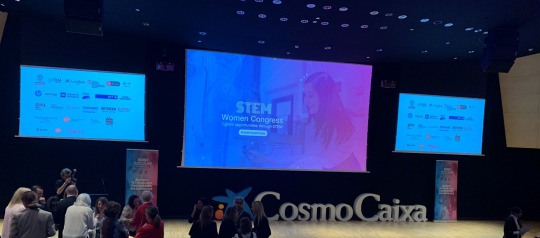
Carol and I got there early and it was wonderful to watch all the women (and some men) streaming in and filling the seats in the auditorium.


The hosts were very professional and presented the program in a fun and interesting way.


Many well-known companies were sponsors of the event, most of them in the field of technology, but some financial institutes also supported it.
Eva Diaz was the first presenter. She is the CEO of the STEM Women's Congress. She graduated with a degree in Information Sciences from the Autonomous University of Barcelona with a Masters from the School of Business Management and she has had twenty years of experience in marketing and communications. She currently is the CEO of Cooking Communications, an agency she co-founded in 2014. She welcomed us all and outlined the program which was to follow.


Laia Bonet, the Deputy Mayor of Barcelona and responsible for digital transition, sports, territorial and metropolitan coordination, and international relations, also welcomed us to the conference. She is a professor at several universities, was the secretary of the government of Catalonia from 2007 to 2010, and a member of the Catalan Parliament from 2010 to 2012.
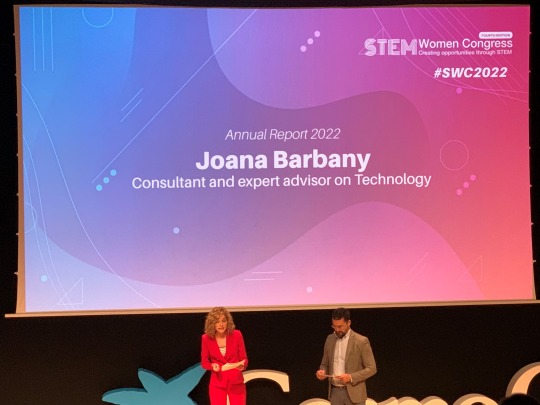

Joana Barbary, one of the directors of the STEM Women's Congress, spoke about the mission of the STEM Women's Congress. She graduated with a degree in journalism from Pompeu Fabra University and has a BA in Business Sciences from Vic University. She has worked in strategic and organizational consulting as well as being Barcelona's Counselor for Communications, Citizen Assistance, and Technology and then became the Deputy Mayor of Economic Promotion, Innovation, and Open Government. She was also the Director General for Digital Security for Barcelona.



The other presenters, most of them entrepreneurs, appeared onstage, along with children who were attending the event with their schools.
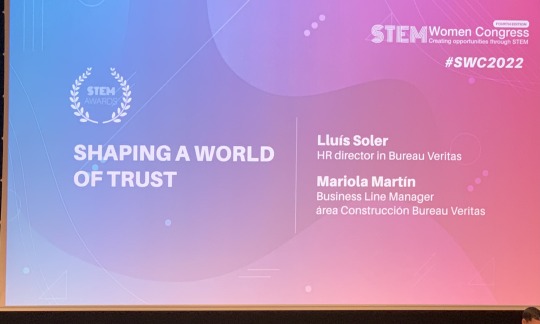

Lluis Soler, the Human Resource Director of Bureau Veritas and Mariola Martin, a Line Manager at Bureau Veritas, spoke next. Bureau Veritas is a French company specializing in testing, inspection, and certification founded in 1828. With a dedicated team of certification specialists and more than 60 accreditations, Bureau Veritas offers a wide range of customized audit and certification services across quality, health and safety, environment, and social responsibility.
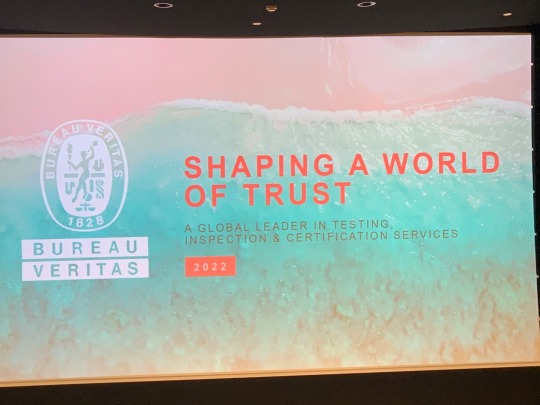


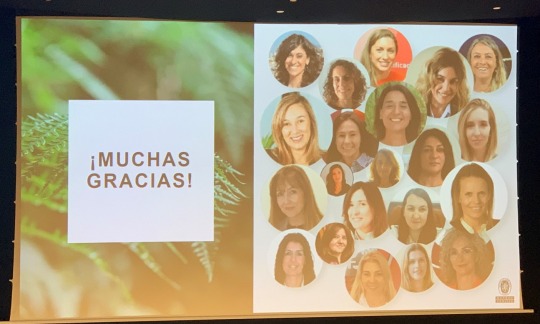
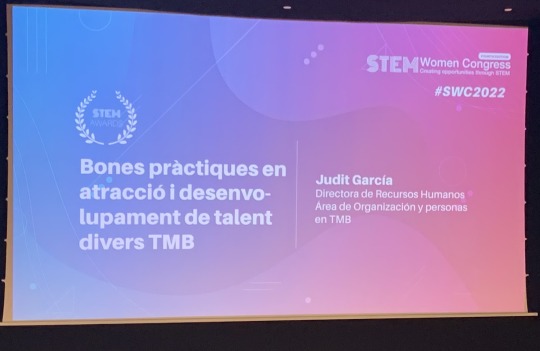

Judit Garcia Borges is the Human Resources Director of the TMB, the metropolitan transit authority of Barcelona. The TMB's mission is to offer the most sustainable, equitable, and excellent integrated mass transit services possible to metro Barcelona. She spoke about their policies and programs for the attraction, training, and development of the TMB workforce.



Ingrid Rojas, who has worked for fifteen years for IBM Global Services in Spain, spoke about opportunities for women in leadership in technology companies, and specifically at IBM. Some of what she said wasn't very encouraging, such as the disappointing progress of women in upper level management and on boards of technology companies, despite an increased awareness of gender imbalance. In other words, in my opinion, the Technology Patriarchy doesn't want women there and is doing everything in its power to prevent women from achieving full equity in leadership.

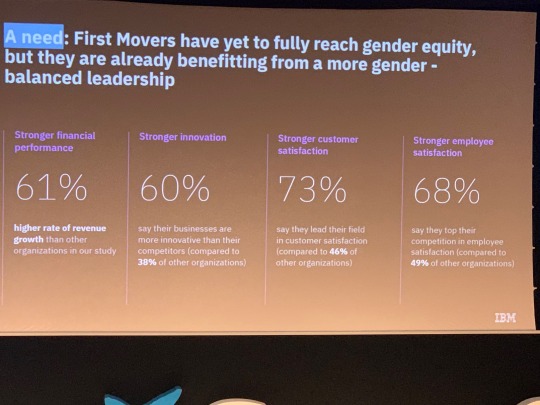
However, progress IS being made, despite this lack of leadership by the males in power, because as more women move into positions of leadership they are slowly creating a more gender-balanced leadership.
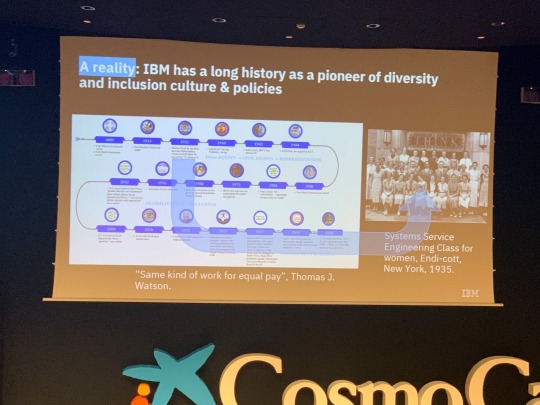
IBM has been a leader in promoting equity, diversity and inclusion so it has been a good place for women to get experience in managing and moving into higher management positions.
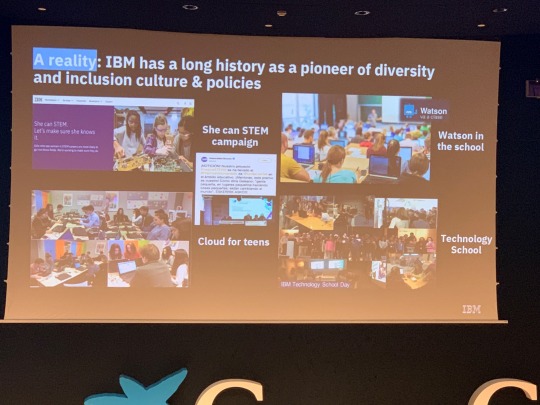
IBM is working in elementary, middle, and high schools internationally to promote equity, diversity, and inclusion, especially for girls, through STEM programs and the "She Can" campaign.
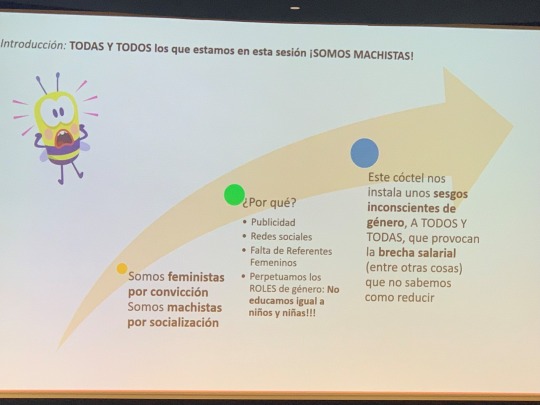

0 notes
Text
2023's Hottest New Sustainable Textiles

╔══ ≪ °❈° ≫ ══╗
Just like me I know a lot of us are making changes to be more sustainable in our wardrobe. From thrifting and upcycling clothing to investing a little more in our garments for better materials, the next real step towards an ecofriendly future is the use of sustainable materials in our textile industry. The production process of materials accounts for the majority of the fashion carbon footprint making these new innovations more important than ever! Let’s take a look at some of the newest and coolest sustainable materials on the market today !
╚══ ≪ °❈° ≫ ══╝
1. Leather alternatives
Mirum: Created by Natural Fiber Welding, Mirum is a plastic-free alternative to leather produced from plants and minerals. According to the company, the material can be endlessly recycled, making it fully circular. Allbirds and Pangaia are among the first brands to create products from Mirum, and Ralph Lauren are also investors in the company.
VitroLabs: Lab-grown leather which replicates traditional leather’s look and feel is produced using just a few animal cells. With Kering being among its investors, it’s definitely an exciting material to watch for the future
Pinatex: One of the early alternative leathers to emerge on the market, Piñatex – made from pineapple waste – has been adopted by a wide range of brands, from H&M to Hugo Boss. At the moment, the vegan leather also contains a bio-based plastic, PLA, and is finished with a PU coating for durability.

2. Recycled Materials
Circulose: Renewcell’s Circulose material is made using 100% discarded clothes. Using renewable energy, the cotton content from garments is separated out and dissolved into wood pulp, before it’s turned into a type of viscose. H&M was the first brand to launch a product made out of Circulose in 2020, and now Levi’s created its classic 501s using the textile.
3. Bio Based Fabrics
Clarus: Natural Fiber Welding’s Clarus technology turns natural fiber's such as cotton, hemp and wool into high-performing textiles with the same properties as synthetics. Recently Ralph Lauren launched its first polo shirts using the fiber
Kintra: Finding a 100% bio-based alternative to synthetics fabrics such as polyester and nylon is a crucial step for the industry moving forward, with Kintra is looking to fill that gap. Made using sugar derived from corn and wheat, the company has partnered with Pangaia to develop and scale a biodegradable alternative to traditional polyester.
4. Carbon Negative Materials
AirCarbon: Newlight Technologies’s AirCarbon material is carbon-negative, meaning it absorbs CO2 from the atmosphere. The leather alternative is created by replicating a process that happens in nature (marine organisms converting methane and carbon dioxide into a molecule that can then be melted down.) The company announced a partnership with Nike, so expect to see much more in the future!
┌─── ∘°❉°∘ ───┐
Sustainable materials are the future of the fashion industry ! With these new materials rising in popularity us consumers are looking for ways to reduce textile waste and invest in products that become a staples in our wardrobe.
Next weeks post will touch on Greenwashing within the fashion industry, see you then !
└─── °∘❉∘° ───┘
Written by Angelica Henson
0 notes
Text
Pinatex, other pleathers with fibers made from the agricultural industry's waste are still made by taking these fibers and pouring polyurethane on it. For example pinatex has 18% PLA (biodegradable but NOT compostable plastic used also in 3d printing) and 10% polyurethane. So, not recyclable either. The only difference between usual pleathers and pinatex or other new pleathers is that the old ones use cotton (recycled or not) and the new ones use byproducts of farming. Vegan leather MUST use plastic, there's no other choice AFAIK.
Idk much abt cork fabrics/"leathers" but the ones I saw still use plastic.
Leather is mostly a byproduct of the farming industry too (otherwise it's very expensive) . Nobody is raising cows only for their hides. The problem is leather tanning and other treatments can use toxic chemicals. There are plant based dyes now though.
The most sustainable leather is second hand real leather. There's no shortage, especially since many leather accessories or garments on the more expensive side are well made and last very long.
"Vegan leather" babygirl that is plastic
36K notes
·
View notes
Text
North America Leads in Sugar Substitutes Market Growth
The sugar substitutes market��is predicted to reach USD 24.3 billion by 2028, with a Compound Annual Growth Rate (CAGR) of 5.2% during the forecast period. By 2023, the market is expected to be worth USD 18.8 billion.
Download PDF Brochure
High Growth in North America
The North America region is experiencing the most rapid growth rate in the sugar substitutes market. This growth is driven by concerns over diet-related disorders, particularly in the United States. The standard American diet contains a significant amount of added sugars, which can have adverse health effects. Scientific studies, such as 'Prioritizing noncommunicable diseases in the Americas region in the era of COVID-19' published in 2022, reveal that noncommunicable diseases (NCDs) account for a staggering 80.7% of all fatalities in the Americas. In response to this health crisis, the NYC Health Department established the National Salt and Sugar Reduction Initiative (NSSRI) in 2009, uniting groups and health authorities nationwide.
In February 2021, the initiative set targets for reducing sugar content across 15 categories of foods and beverages, encouraging food and beverage companies to voluntarily reduce salt and sugar levels. Furthermore, a 2022 study by Nutrisystem and OnePoll found that over 70% of Americans are now more concerned about their physical health following the COVID-19 outbreak. This growing health consciousness is shifting consumer preferences towards food products with health and environmental benefits, driving the expansion of the sugar substitutes market.
Europe: A Changing Landscape
Europe, with a market size of USD 3.3 billion, is expected to grow at a CAGR of 4.7% during the forecast period (2023-2028). Sugar consumption in Europe is on the decline, as consumers increasingly opt for low-sugar diets. Food processors are reformulating their products to contain less sugar, often turning to sugar substitutes to achieve sugar-free labels.
Regulators are closely scrutinizing many sugar substitutes, while manufacturers are exploring new methods and components to reduce sugar without compromising flavor. In 2022, the World Health Organization's Regional Office for Europe introduced the voluntary Member State-led Sugar and Calorie Reduction Network as part of efforts to promote healthier diets and reduce the prevalence of overweight and obesity across the region.
Innovations in Europe
In August 2019, French company Roquette, a global leader in plant-based ingredients, partnered with biotech pioneer BRAIN AG and AnalytiCon Discovery, a BRAIN Group company, to develop Brazzein. Brazzein is a protein sweetener known for its remarkable sweetening potency while maintaining its taste profile and sugar-free attributes. This collaboration aimed to gain approvals and scale up the production of Brazzein for the food and beverage industry.
Make an Inquiry
Key Players in Europe
Some of the notable sugar substitutes companies in Europe include Will’s Vegan (UK), Pinatex (Spain), Veja (France), Clarino (Philippines), Viridis (Italy), Mabel (Italy), Volkswagen (Germany), and others. These companies are actively contributing to the evolving landscape of sugar substitutes in the region.
0 notes
Note
I am curious about alternatives to chromium leather. I had to search for a leather product recently and was thankfully able to find it in vegetable leather (not vegan but vastly preferable since it doesn't expose the environment or consumer to chromium). I have also seen cork leather available. Both of these are a bit more rigid than chromium leather though, so they are only right for certain applications. Do you know of any other proposed alternatives? I keep running across alleged plant leathers that are actually full of plastics, I would love to find an actual plant leather.
I feel you on the plastic leather, but there are also other options than either plastic or cork. So far I have heard about leather alternitives made from cactus, pinapple ( I think its called pinatex), mushrooms, flowers, apples and algae. But I´m sure there is more.
As far as I know the pinatex and apple alternatives use the byproducts from the food products to make the leather.
It is actually quite interesting to see how far we have come and only highlights the fact to me how unecessary animal leather actually is.
1 note
·
View note
Text
………..the future of fashion as we dive into the exciting world of trend forecasting for the upcoming Spring/Summer season of 2024-25……………..
"Get ready to embrace the future of fashion as we dive into the exciting world of trend forecasting for the upcoming Spring/Summer season of 2024-2025. In this blog, we'll explore the latest styles, colours, and patterns that are set to dominate the runways and inspire your wardrobe. From bold prints to innovative designs, join us as we uncover the hottest trends that will define the fashion landscape in the seasons to come. Let's embark on this stylish journey together!"
Get ready to add a pop of colour to your life! We'll dive into the exciting world of colour trends for the upcoming seasons. From vibrant hues to soothing pastels, we'll explore the shades that will dominate the fashion and design landscape. Whether you're looking to revamp your wardrobe or refresh your living space, join us as we uncover the hottest colour palettes that will inspire your style and elevate your surroundings. Let's embrace the power of colour together.For Spring/Summer 2024, WGSN and Coloro predict key colours to be Fondant Pink, Cyber Lime, Radiant Red, Elemental Blue, and Nutshell that are set to dominate the world of design and fashion, collective craving for equilibrium and steadiness, stability and need to nurture and care for each other in these difficult times, mentally and physically, raising our energy levels or grounding us back down, they connect to the evolving, fast paced and technologically driven world we live in.Care, connection and community underpin our five key colours for S/S 24.
Depiction of the colours
Fondant pink, Radiant Red - stimulating, sweet qualities nurturing a loving culture.
Elemental Blues and Nutshell - grounding and stable attributes
Cyber Limes - synthetic realism, connecting us to our ever-expanding digital lives.
Get ready to indulge in the luxurious world of fabrics.We'll explore the latest trends in textiles and materials that are set to make a statement in the upcoming seasons. From soft and sustainable fabrics to bold and innovative textures, we'll uncover the materials that will define fashion, interior design, and beyond. Join us as we dive into the fascinating realm of fabrics and discover the perfect blend of style and comfort. Let's embrace the tactile wonders of fashion and design together.
The fabrics that we would see everywhere around would be :
Hemp
Chitin fibre - Chitin is a natural compound found in the shells of crabs and shellfish that protect them from their environment. Like cellulose from plant fibres, chitin is easy to process into textiles, because it has a soft texture and dyes easily.
Seaweed - made by using algae from the sea, absorb sweat faster than cotton
Banana fibre - fabric made from bananas
Pineapple leather + silk - Pineapple leather is an imitation leather called Pinatex. It is made from a blend of natural pineapple leaf fibres, thermoplastic polyester, and petroleum-based resin.
Coconut fibre
Corn fibre
Recycled polyester
Lab grown cotton
Tencel
Organic linen
100% biodegradable fabric
Hemp
Recycled denims
Polyester blend
Thin cardigans


Delve into the fascinating world of design details and uncover the trends that will elevate your style game. From intricate embroidery to eye-catching embellishments, we'll explore the small yet impactful elements that will make a big statement in the upcoming seasons. Get ready to embrace the artistry and attention to detail as we discover the hottest design details that will set your fashion choices apart. Let's embark on this stylish journey together.
Sweet necklines
Puff sleeves
Ruffles
3D design
Patch pocket
colour blocking and mock layers develop more vibrant items.
The use of Butterfly in patterns is mostly focused on floral and striped designs, which feature repetitive and regular shapes. Knit fabrics with heart-shaped cut-outs and hand-crocheted textures effectively display the sweet visual effect.
Wrap Waist X-line
Ruched Waist A-line
Slim-fit High Neck
Cuffed ankles of tapered pants
Twisted knots
Exposed stitches
Smocking and flared sleeves
Flared pants with slit
Let's explore the captivating world of trend forecast themes. From futuristic minimalism to nostalgic retro vibes, we'll dive into the overarching concepts and inspirations that will shape the upcoming seasons. Get ready to immerse yourself in a world of creativity and imagination as we uncover the themes that will influence fashion, design, and beyond. Let's embark on this trendsetting journey together and discover the themes that resonate with your personal style.

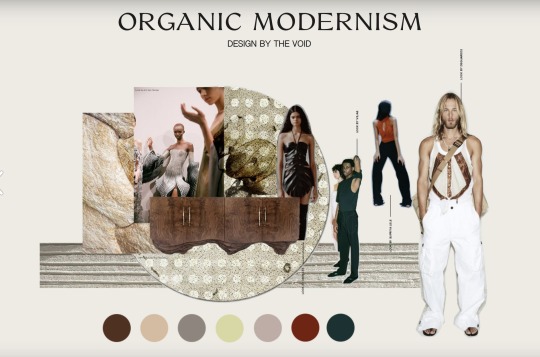





It's been a thrilling journey exploring the trend forecast for 2024-2025. From vibrant colours and luxurious fabrics to captivating design details and inspiring themes, we've uncovered the key elements that will shape the fashion and design landscape. Now, armed with this knowledge, you're ready to embrace the upcoming seasons with confidence and style. So go ahead, express yourself, and let your fashion choices reflect the trends that resonate with you. Remember, fashion is all about self-expression and embracing your unique sense of style. Stay trendy and keep rocking those fabulous looks.
0 notes